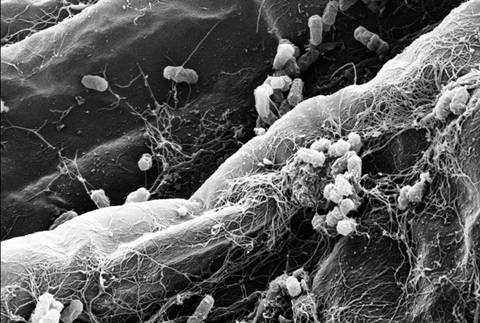The production of molecules with inhibitory activity is well known for some soil-dwelling and root-associated microorganisms to keep microbial plant pathogens in check.

In this study, published in Proceedings of the National Academy of Sciences, the researchers at the Max Planck Institute for Plant Breeding Research used a large collection of bacteria that were isolated from roots of the mouse-ear cress, Arabidopsis thaliana, and investigated their ability to produce molecules with inhibitory activities.
This led to the identification of a bacterium, called Pseudomonas brassicacearum, which exerted an unusually high inhibitory activity on many other bacteria in the root microbiota.
The scientists found that this activity is largely mediated by two molecules that act in concert to keep the microbial competitors at bay. The first molecule is an antimicrobial agent, called 2,4-diacetylphloroglucinol, while the second molecule scavenges the essential micronutrient iron, thereby stealing it from its bacterial competitors.
Root colonization
The researchers then used P. brassicacearum mutants engineered to block production of the two molecules and tested whether they were relevant to root colonization in the presence of bacterial competitors.
To test this hypothesis, they repopulated roots of germ-free mouse-ear cress with a simplified bacterial community in the presence of either P. brassicacearum mutants or the wild-type strain.
The international team was able to show that these two natural chemicals - produced by a single bacterium - do not only affect the structural organization of the root microbiota, but also give P. brassicacearum an advantage in colonizing and dominating the root niche.
The work supports the importance of chemical warfare between bacteria for successful host colonization. The conclusions also have implications for the development of biologicals in agriculture, as they predict that the inhibitory activities observed in a simplified laboratory setting could scale-up under field conditions. This is a building block on the way to developing more sustainable crop protection technologies and understanding the inner workings of the plant microbiota.
“It’s amazing to learn how natural compound chemistry is leveraged by microbes in nature to shape microbial consortia that provide beneficial services to their plant hosts“, says Paul Schulze-Lefert, project lead.







No comments yet